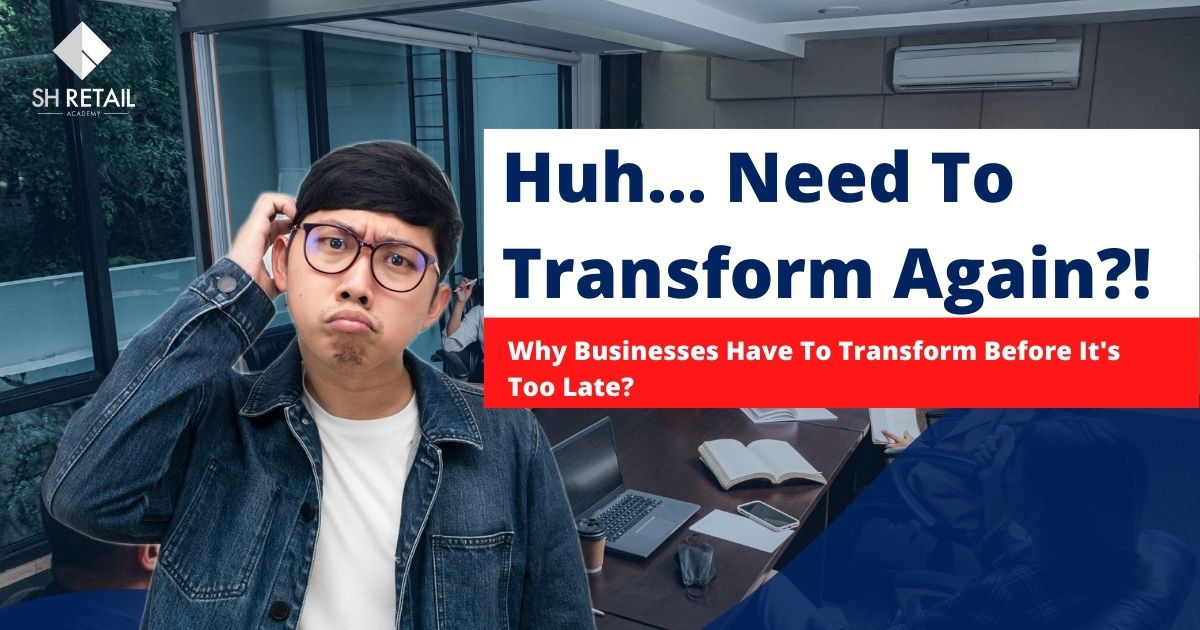When you're the owner of a business, particularly SMEs, your first instinct may be to expand your operations and see your company's revenue increase. Honestly, I don’t blame you. Business expansion can be prompted by a variety of factors, but it is most often the result of a company's desire to expand its revenue streams. And as a result, while some businesses seem to thrive on growth and expansion, others sadly don’t. Take a moment to ponder, why does this happen? That is why it isn't always the best strategy to keep expanding.
The thing is, there's no point expanding a business without first fixing what needs to be fixed, because you won't be able to generate additional revenue. Expanding a company's resources means that it has less capital available for other business transactions, which is a drawback of expansion. In a sense, expanding your business often means taking on more debt in order to take care of other matters.
So, rather than focusing solely on growth, what else can we do to strengthen our company's position? Let's have a look at what we can do to boost our business and sales.
- Significance Of A Store Productivity
- Retailers' Adoption Of Digital
- Re-evaluate Your Business Plans
1. SIGNIFICANCE OF A STORE PRODUCTIVITY
Eversince the pandemic, as companies begin to reopen, we are entering a period known as the "new normal." Most businesses have seen sales revenue disruptions, and as the economy continues to be characterized by uncertainty, it has never been more critical to ensure that your cost base is correct and that your productivity is improved. Who doesn’t want better productivity right? The productivity of employees in-store is one of the most crucial measures for retailers. As a result, it influences how quickly activities are finished, how many transactions are completed, and how many things are sold. Trust me, you would really want to prioritize it after this.
Besides, there are many more factors that influence productivity and efficiency in the retail sector than there are in other industries, which makes it a more complex setting. The productivity of the staff is critical for traditional merchants and brick and mortar establishments. Instead of relying on their own initiative throughout the shopping journey, customers rely on employees to guide them through the process from product identification to a smooth checkout. Any barriers, such as a lack of inventory or long lines, have an immediate influence on consumer satisfaction and, as a result, on your in-store revenues.
But fret not, to improve your store productivity, these are some of the factors you need to monitor which includes;
- sales per employee or per hour,
- items sold per transaction (and rates of upselling),
- employee satisfaction and happiness
- overall customer satisfaction and
- NPS scores
These factors all play a role in how successful a business is. Without these elements, you can bid goodbye to your store productivity, don’t you think?
Now, after monitoring all these, you need to take stock levels into account. To be more productive, stock levels should be adjusted to meet demand, as having too much on hand only adds to the workload and tightens your cash flow in the business. Stock must be transferred and counted many times if it exceeds the shop floor's holding capacity. Other than that, take a look back at what you did at the height of the crisis. Because most retailers who conducted business during lockdowns made adjustments they wouldn't have made in more normal circumstances. If you've made changes to your workflow and reduced the size of your operation, you should proceed with caution when adding new activities to the store's schedule. Finally, remember that productivity is about achieving more with less. Selling more is the best way to increase productivity, and creative businesses will seize possibilities in these changing times.
2. RETAILER'S ADOPTION OF DIGITAL
If the Covid-19 pandemic has taught us anything, it is that digital technology adoption is no longer optional for businesses, but rather a necessity. The closing of brick-and-mortar stores, combined with the threat of infection, caused consumers to move their shopping habits online, resulting in the emergence of Malaysia's e-commerce market. However, not everyone is ready to go digital yet as, according to estimates from consultancy firms, 77% of Malaysia's SMEs are still in the early stages of digital transformation. This digital adoption gap in business can be seen in the web presence of the company.
You know, increasing efficiency, saving money, and providing better products and services are just some of the ways technology is transforming the retail industry. Retail companies who were hesitant to implement digital solutions are now seeing the advantages of doing so and are seeking ways to speed up their gains. With today's technological advances in retail, a new age of possibilities has opened up as the online and offline worlds have become increasingly intertwined.
First of all, from computer vision to real-time customer engagement, artificial intelligence or AI is transforming the retail industry. Consequently, merchants are eager to embrace artificial intelligence to better communicate with their customers, improve their procedures, and raise their productivity. Consumer hyper-segmentation and the ability to respond to real-time demand signals are among the technologies that may assist retailers. In short, the retail industry has long-standing issues, and AI is believed to be a viable solution. Isn’t that interesting?
For a lot of businesses despite getting more sales, after the pandemic, they faced issues such as managing supply chains, selling products, opening stores, and keeping customers and employees safe. It’s a real struggle I’m telling you. Nevertheless, this may have been avoided if the industry had started using blockchain technology. Real-time tracking and administration capabilities of blockchain may be the ultimate digitalization that retailers desire. With these explanations, the retail sector has witnessed a significant digital transition, propelled by the epidemic and even shifts in consumer behavior. Therefore, if you ignore digital adoption, your business will shrivel in despair.
3. RE-EVALUATE YOUR BUSINESS PLAN
So now what’s next? This is where I need to revisit your business strategies. Sometimes, sticking to an old (possibly outdated) strategy is not going to do your business any good since things in retail are constantly changing and evolving. Trends come and go, but the market stays very competitive. Having a clear plan in place will help retailers stand out from the crowd as well as get more customers and keep making money. When you want to do this, you need to have a clear sales strategy that is well-executed. So retailers, get your team together, lay out all the obsolete strategies and revamp the whole thing! This way, your store can rise above the stiff competition and keep making sales.
To do this, ask yourself, is my brand identity clear to me? Is this reflected in every element of my online and offline persona? Do you have answers for these questions? It's important that your customers know who you are. You can tell a lot about your brand's values, products, and target audience by how you present yourself to the world online and in your brick-and-mortar retail location. You'll be able to communicate more effectively if you have a firm grasp on who you are as a company and what you do.
Another thing is, having a plan to increase your store traffic, both online and offline. Your online presence is vital. To create your plan, you must first identify your uniqueness in order to stand out online. Decide how to display it on your site once you've identified it. The initial 10-20 seconds of a website visit are critical. This is the only chance to establish a good first impression and encourage people to browse your website. You should use social media to connect with your customers. Then, you can also share sneak previews of new lines, collections, items, or brands you carry.
How could you leverage on your online presence and drive traffic to your offline stores? In the new retail era, having presence both online and offline is not enough, the key is on how to give a seamless shopping experience for customers. Are your online stores and offline stores integrated, in terms of your products, price, promotions, membership etc.? Could your customers receive the same benefits to shop online or offline? If not, this is the time for you to consider each of these strategies in your business plan and set the right direction for your business to grow.
To sum it up, there are other ways you can increase your business profit rather than just putting your sole focus into expansion. Consider other methods that were discussed as above and you’ll see the light at the end of the tunnel. Hope it helps!
Before I end this article, I have good news to share with all of you. Fortunately, you don’t have to look far to learn about new strategies in retail because we have just the right thing for you. If you’re interested and keen on implementing proven methods for your business and upskilling your employees, do visit our website for more information on programs that can assist you in both your professional and personal endeavors. Till next time, toodaloo!
Written By Syuhada Rozihas,
SHRA Corporate Trainer
Syuhada Rozihas is a Corporate Trainer at SH Retail Academy who is passionate about making a difference for herself and those around her. She has trained more than 1,000 sales professionals, executives and managers in the areas of retail sales. Meanwhile, in her free time, she enjoys hiking and running to keep her in shape, as well as baking for her loved ones. You can find her on LinkedIn.








